It all goes back to drawing. – Gordon Moore
Anita Rogers Gallery presents Works on Paper, an exhibition of drawings by Gordon Moore, George Negroponte, Morgan O’Hara and Joan Waltemath. The exhibition will be on view October 11 – November 11, 2017 at the gallery’s new location at 15 Greene Street, Ground Floor in SoHo, New York. There will be an opening reception on Wednesday, October 11, 6-8pm.
Collectively, the works in the exhibition reflect on the intimate nature of drawing. The pieces allow the viewer to engage with the artists and their processes in an exceptionally close manner. The show aims to celebrate drawing as not only fundamental to the artist’s practice but as a primary form of artistic communication.
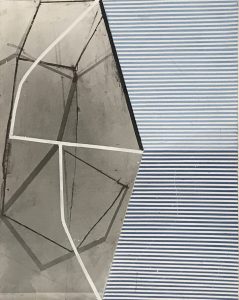
Moore works in an innovative way; the grounds for his drawings are sheets of developed photo emulsion paper. He then draws on top of and in response to the elements present in the paper. There is an unusual depth to the final pieces – they challenge the viewers’ natural perceptions. Moore (b. 1947, Iowa) has pieces in the collections of the Museum of Fine Arts (Boston, MA), Yale University Art Gallery (CT), Baltimore Museum of Art (MD), General Electric Corporation (OH), the Krannert Art Museum (IL) and Kinkead Pavilion (IL).
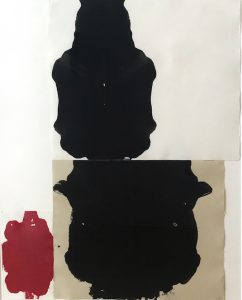
Negroponte will exhibit a series of drawings spanning from 1996 to 2016, each constructed from several pieces of paper, painted, cut and then placed back together in different configurations. On this work, Negroponte states, “Primacy counts more than anything right now. I want to get down to the barest essence: discarding the object for a trace or glimpse of it residing in the weight of each mark or shape.” Negroponte (b. 1953, New York) has work in the collections of the Harvard University Art Museum and The Metropolitan Museum of Art.
Waltemath makes mindful drawings; they are studies for her Torso/Roots series of paintings and will be on view unframed. Like her paintings they are based on a grid derived from harmonic mathematical relationships but, here, the handmade paper acts as both the ground and frame for the grid. Its presence is as prominent and powerful as her paint. At once lush and subtle, her works on paper are delicate glimpses into her process. Waltemath (b. 1953, Nebraska) is in the collections of the Museum of Modern Art, the National Gallery of Art, the Hammer Museum and the Harvard University Art Museum.
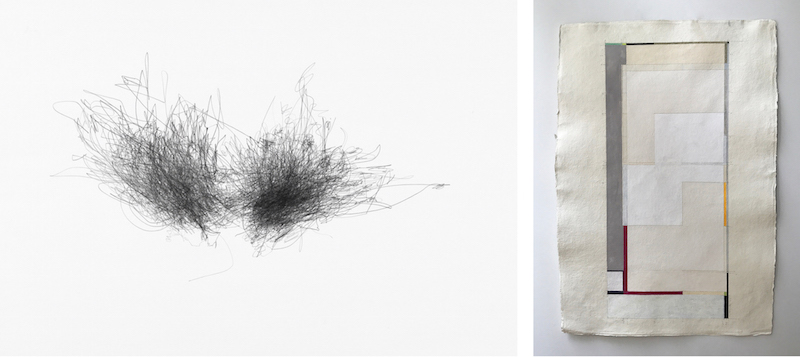
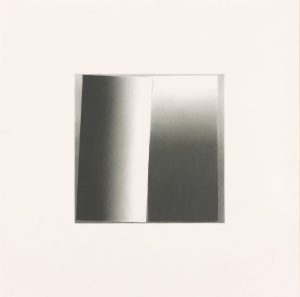
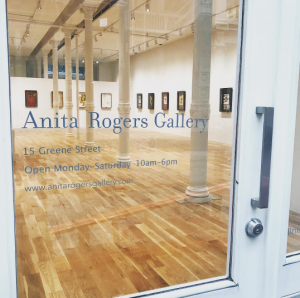
 es’ precisely organized colors and textures create a prevailing mood of a restful oasis. The sumptuous dilapidation of the gallery walls and fixtures enhance this mood. On a recent trip to Washington D.C. surrounded by historic monuments and nature I felt the same sense of peace and contemplation. These paintings provide the mental space to think, contemplate, and consider. The rigidly organized lines and colors force the consciousness inward or similarly condense the surrounding space and architecture onto a single plane. As such the paintings are correspondingly simple and complex.
es’ precisely organized colors and textures create a prevailing mood of a restful oasis. The sumptuous dilapidation of the gallery walls and fixtures enhance this mood. On a recent trip to Washington D.C. surrounded by historic monuments and nature I felt the same sense of peace and contemplation. These paintings provide the mental space to think, contemplate, and consider. The rigidly organized lines and colors force the consciousness inward or similarly condense the surrounding space and architecture onto a single plane. As such the paintings are correspondingly simple and complex.